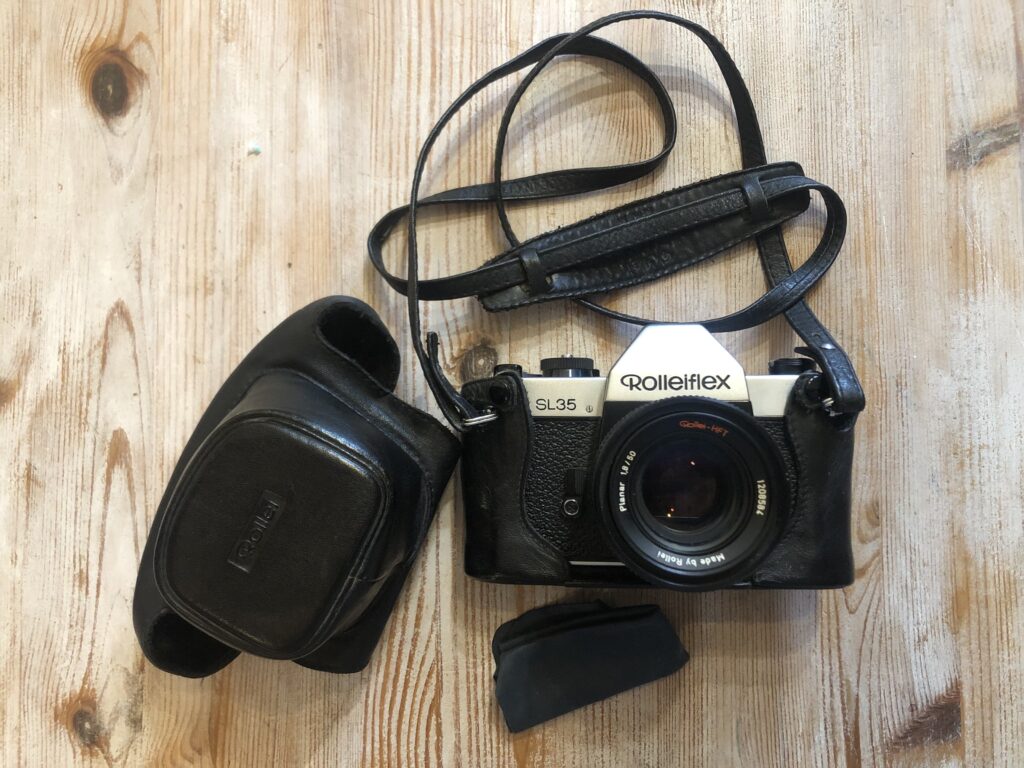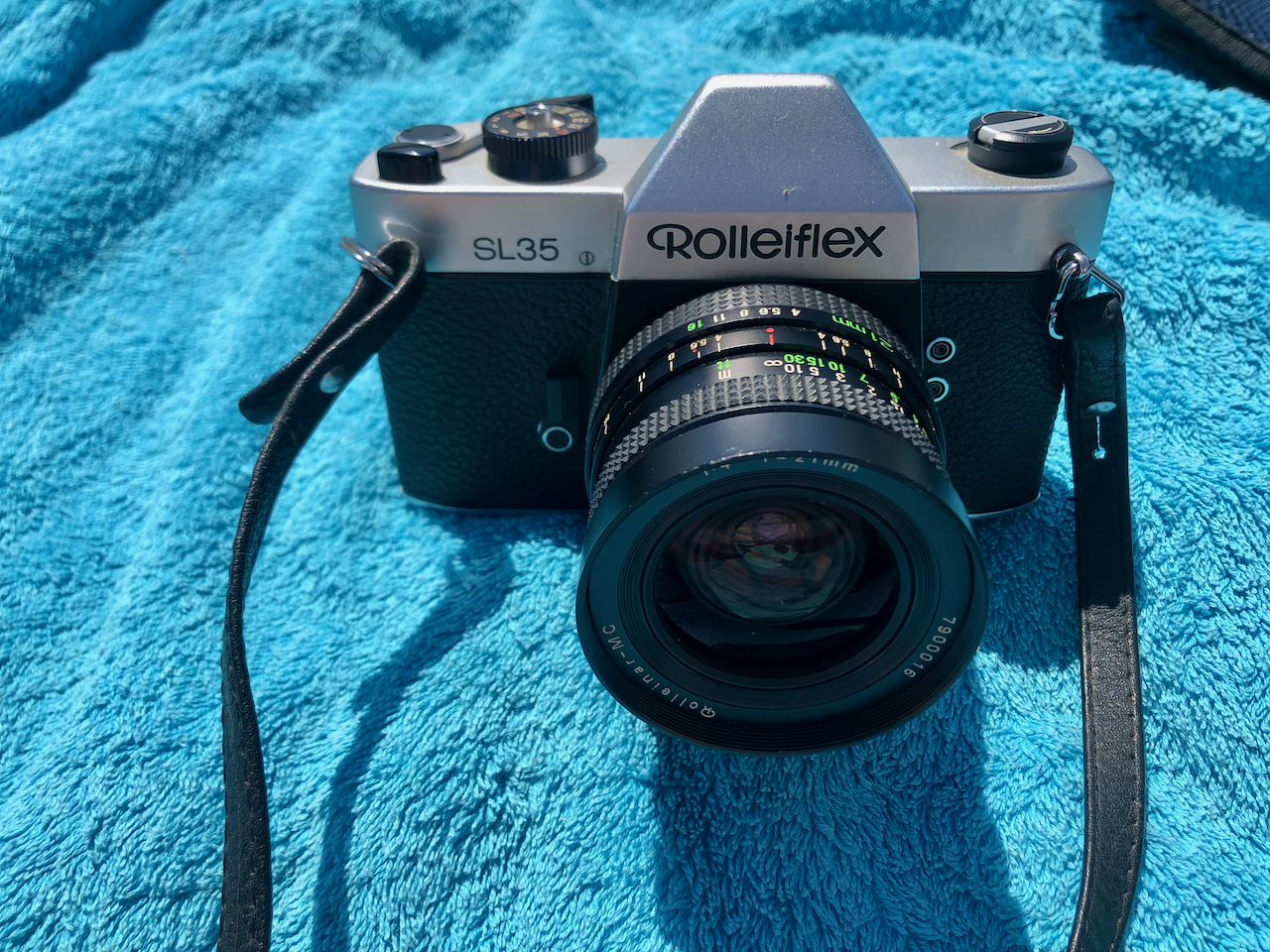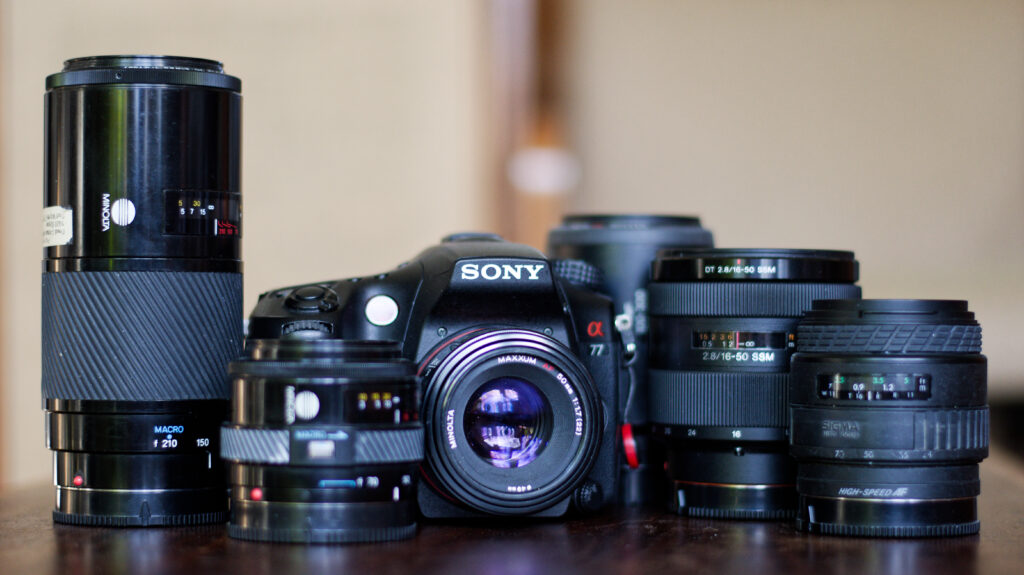Why would you use a rather geriatric camera that even when new was a bit of a dead beat and a little unloved? It’s a question I have been asked a few times in the last 4 months – not entirely in derision, but often with a scratching of the head of non-understanding. “But why not a Canon or a Nikon, they are much better aren’t they?” “Why not even a Pentax?” Of which I actually own a few and have so done since around 1980. Then from the aficionados of photography “Why not even a Contax they are German and at least reliable?”
But it’s question that I can’t say has never crossed my mind. Otherwise, I would not be writing this. However, it’s a question where the answer is more emotion than rationale – though there is actually some rationale – honest there really is!
The back story – sorry it is important but not exciting
Since June my film camera of choice has been a German made Rolleiflex SL35. A camera which by shear chance I happened on in a small eco-recycle-second-hand semi warehouse in the middle l’Aude in the South of France. A camera which was very unexpected. But which was possibly the gods shining down on me?
I admit it I am a Rollei 35mm SLR user, having used an SL2000 for over 2 decades. But sadly, my long term friend who had never been problematic – other than needing to have fresh cells – was stolen around 6 years ago. It was a camera that I had always wanted and a camera which worked flawlessly – for me. But it’s a camera which by 2023 I had still failed to replace – There are many perfectly working SL2000 which do not have any of the problems so often reported, but on the open market they are now few and far between and during Covid I could little justify paying around 600Euro for a good quality example. *** An aside – the electronics in Rollei cameras are no less reliable than say an AE-1 – its just millions of AE-1s were made so even if you take out the dead ones there are still millions. Rollei 35mm SLRs are from a much smaller cohort – the dead ones stand out more

Then in March 2023 I managed to get hold of one in working order for a very good price. Problem – I was in Asia and the camera in Europe. Anyway, I bought it, and had it delivered to my eldest who is in University in the Nederlands. In June when I was home in France – I charged the battery pack and hey presto the motor ran, and the shutter failed to fire. Sadly, three months of sitting waiting for me and the previous owner would accept no possibility that the camera was faulty when they sold it
So, I have a Kaput SL2000f waiting until I am home long enough to get it checked in Germany to see if it can be a costly repair!!!!!!
So again, between June 2023 and June 2024 I was sans Rollei ——arggghhh it is painful when you have so much Rollei Zeiss and Rolleinar glass sitting waiting to be used.
Then looking for “thrift” clothing for my daughter we walk into a large former agricultural steel and ash block unit and viola – a la Rolleiflex SL35 – AND GERMAN MADE.
But it had an obviously sticking shutter at 1/500 and 1/1000 – BUT it was also at a price that made it worth the risk – In the end an easy fix with a simple lube of the second curtain release and brake – but it did mean taking top and bottom plates off and the lens box after developing that first film confirmed my suspicions.
So lovingly I got exterior cleaned – it didn’t need much it had been loved – and a roll of basic fuji color 200 loaded.

Finally why do I use this thing?
I will not bore you with the technical stuff about the Rolleiflex SL35, Recky did that job already and and Ibraar Hussain and even better job here – but if you want to understand the SL35, then start with Frank Mechelhoff – but it is an overlooked jewel.
So why use a camera that doesn’t have open aperture metering? Doesn’t have a split image focusing screen only a micro-prism. And doesn’t even have a cold shot – let alone a hot shoe? A camera that few people even know of and fewer still have ever held.
Well the first part is that it is an emotional connection – from the first time I took some images all the way back in around 1979 – I have been obsessed with Rollei / Voigtlander. An obsession that actually took another almost 20 years to full fill.
Emotions
Its an emotional connection with the side street that the German camera industry had become, by 1970, but also with the history of Zeiss and Rollei and especially Voigtlander, who had all in one way or another given us what photography is today. Most decent fast 50s owe a massive dept to Dr Tronnier’s Ultron more than the Double Glass Planar, but biotar, planar, sonar, ultron, multicoating, the pentaprism – the modern SLR and even the M mount range finder – without Contax, Leica would have sat on their laurels!!
It’s an emotional attachment with innovative engineering – not the innovation of something that stuck for ever and everyone else adopted but the innovation to get around problems in a way that meant Rollei didn’t pay licensing fees to Seiko, Pentax, Canon, Nikon etc – who had all perfected the SLR as we know it by then. An emotional attachment to the belief that German engineers could overcome anything – by entirely over engineering every single piece. It was the over engineering which was the downfall when production moved to Singapore.

But it’s much more than that:
Using a Rolleiflex SL35 does allow me to use some fabulous glass designed for film. However, it takes me to the root of making images.
In the same way that a medium format camera slows the process right down – so too does using a SL35. It’s a much more visceral, while also intellectual experience than even using my Pentax MX. It’s an experience where I have to think like a 1960s capturer of light not a 2004 digital image maker – there is no mud slung, I also use digital.
Focusing is slow with a micro prism – so you have to anticipate much more. You have to be conscious of the around, not just the in front of. Even for “street” you have to plan your shots more. And it doesn’t always come off – focus depends on Depth of Field when you work like this. It takes you back to using hyperlocal distances and knowing the feel of the lens you are using, because you slept with them at the end of your bed for 6 months.

A different photography
This is photography as was – not chasing bokeh or resolution or “film look”. Bokeh doesn’t exist in this world – it’s not a device to bring separation of a single object from its world. It’s photography where the world has to be considered as well. Especially true if you stick to using films lower than 24DIN (I still think in German – 400ASA). TriX was as fast as it got…
With only stop down metering and mercury type batteries – you do what photographers did – you primarily use a handheld light meter (I have yet to use the meter even though it works). In my case a Vivitar 35 – a Sekonic Lumi clone -which meters for 18% grey. So, you take average readings as often as you can and then either change the aperture (rarely) or shutter speed (its why the first automation was aperture priority – it aped what many photographers already did) to match the actually conditions you have infront of you. Seeing the scene in EV (Zone system) helps, but it becomes an intuitive hunt. Your images depend on the light – not on automation around averaging the light – that you have. You start to appreciate deep shadow as much as detail and blown out highlights too.
Its photography of an age of grain – even FP4 can have grain that in itself becomes part of image making.

Yes, it suits black and white, but the only reason I have not shot much colour is that right now I have no Fuji Velvia – colour stock for which the wonderful Rollei Zeiss glass was almost optimised (sadly Agfachrome no longer exists) – but the pursuit of the image would be analogous and would not change much.
It is photography where you can still shoot 36 shots in 30 minutes, but it needs a confidence in a success rate and a failure rate – an acceptance that not every image will be – “sharp in the edges” or even sharp in the middle and that sometimes it will be the happy accidents that work better.
It’s also photography where you become less conspicuous – even with a mirror slap from Donar (Thor). It’s a photography where you illicit more interest than irritation. There is something about a silver and black body, that does not intimidate in the way an all-black DSLR does – it is a size thing.

It’s the image first
It’s a photography where you have to work for each image – where you are constantly thinking about distance- DoF – light changes – high key and low key (why have we stopped using both of these terms?) – contrast. It’s not better than greater automation or autofocus or anything – it’s just very different. It is very different.
Again, it’s the emotion – it’s a style of making images which I like. It’s nerdy photography yes, but also very liberating. You the photographer are in control – you can only blame you in the end.

Ultimately it’s about the image less than the camera – though lenses are very important and the Rollei Planar 50mm f1.8 (its actually an Extended Ultron design not a planar) which is the lens I have most used in the last 4 months is a wonderful bit of glass – on film where it was designed to be. Alongside some less use of the Rolleinar 21mm f4 – a lens that works the room – the whole room and a fittingly – sometimes overly – sharp Sigma 28mm mini wide (my 25 distagon was stolen along with my SL2000) it make a lovely all day carry set.
A carry set which I carry in a 1960s ROX camera box – with a lock and a hinge – again an emotional attachment, but again another thing which slows the process.

As we have had a return to slow food and slow travel and even slow sport – I think every photographer should at some time return a little to the 60s, not only in technology, but also in approach. A slow philosophy of image making.
The Rolleiflex SL35 doesn’t just call for you to slow down – it insists that you do. If you don’t you have missed the entire point of owning one.

Please come and visit me on Intsagram, Threads and Youtube, where after almost 50 years of making images I am starting to put my personal thoughts down.
Share this post:









Comments
David Hill on Rolleiflex SL35 – Why use an unloved camera?
Comment posted: 04/11/2024
Comment posted: 04/11/2024
newhampton1966 on Rolleiflex SL35 – Why use an unloved camera?
Comment posted: 04/11/2024
Comment posted: 04/11/2024
Paul Storer on Rolleiflex SL35 – Why use an unloved camera?
Comment posted: 05/11/2024
I had started using film again with the M3 and wanted to maintain this practice and came across a Rolleiflex 35SL with a 50mm and 28mm Rolleiflex lenses at a good price on eBay.
After finding the right battery I have just put my first film through and the negatives came back last week.
I expected some issues, especially the light meter, but the images are superb. They improve over the roll and the final shot a portrait was fantastic ( even at a low res scan provided by the processing co )
When the Leica gets fixed the Rolleiflex won’t get sold or put to the back of a drawer and forgotten I will still use it.
Comment posted: 05/11/2024
Röd White on Rolleiflex SL35 – Why use an unloved camera?
Comment posted: 12/11/2024
I have many cameras to choose from, but get some of the most enjoyment from my slightly battered, 1966 Rollei 35 which goes all over the place with me and comes on more adventures than my more expensive kit. It also creates some of the nicest memories for me which makes me enjoy it even more.
Comment posted: 12/11/2024
JC on Rolleiflex SL35 – Why use an unloved camera?
Comment posted: 12/11/2024
Very often i choose one of my manual SLR's to experience the process of photography : For the last roll i took the Canon FTb, at the moment i shoot a Praktica LTL3 with lots of joy. The next roll comes into a Minolta SR-T, i guess.
Comment posted: 12/11/2024
Graham Line on Rolleiflex SL35 – Why use an unloved camera?
Comment posted: 13/11/2024
I prefer the phrase I was taught in pre-glass plate days, which was "consider all of your options before you shoot." Framing, light evaluation, focus selection, depth of image all need to be considered. Among other factors like "is this image going to vanish in an instant or do I have time to think about it."
Slowing down can pay benefits if you use the time wisely and productively but you have to know why you are choosing to slow down. The camera can't do it for you, no matter how unwieldy it may be.
https://www.flickr.com/photos/74312783@N00/18679349918/in/dateposted-public/
Comment posted: 13/11/2024